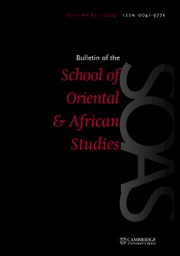Royall Tyler is undoubtedly one of the most important scholars and translators of premodern Japanese literature active today. His two newest books confirm his reputation and offer us fresh translations of a range of premodern texts.
He has published an array of translations of classical Japanese literature: Japanese Tales (1987), Japanese Nō Dramas (1992), The Tale of Genji (2001) and The Tale of the Heike (2014) as well as historical tales and chronicles, to name just the most prominent of his premodern translations.
His approach to translation has changed over the span of his career of more than forty years, as we would expect. A look at three versions of one of his favourite works is revealing. Tyler has translated the Nō play “Matsukaze” at least three times: in the early Nō book of translations Pining Wind: A Cycle of Nō Plays (1978), then in Japanese Nō Dramas (1992) and again in the book under review here in 2024. The early translation pushes the boundaries of the English language, with the aim of transmitting, as much as possible, the complexity of the original Japanese. The spirits of two fisher girls Matsukaze and Murasame are drawn out by the prayers of a wandering monk. They recall the most important moments of their lives, in particular, their love affair with the courtier Yukihira, who was exiled from Kyoto to the shore of Suma on the Inland Sea. The local girls, far from the elegance of the Capital, had burned brine to gather salt for their living. Below are the first words the audience hears from the spirits.
The original Japanese: (して、ツレ)潮汲み車僅かなる憂き世に巡るはかなさよ。
(1978) Doer, Second: A brine scoop wagon wheels eagerly the sorry world round and round, so cruelly fickle!
“Doer” is a literal translation of “shite” (protagonist) and “Second” for “tsure” (companion). The spaces in between the phrases challenge the reader to consider the passage as verse.
The later translation is less experimental but still tries to grasp all aspects of the original text.
(1992) Pining Wind and Autumn Rain: A brine wagon wheels meagrely
Our dreary world round and round:
O sorry life!
The newest version softens the language even further, paring down the translation to convey the essence rather than struggle to capture all the elements of the original, and thereby, in fact, expressing the original Japanese more effectively.
(2024) Rain, Wind: A brine wagon
wheels this poor life round and round
with all its sorrows.
Even from this brief comparison, we can get a sense that Tyler has become more relaxed in his relationship with the original Japanese and the ever-present question of how to render the phrases best and most effectively into English.
Most of the plays in the Nō volume are newly translated and the book also includes four essays on aspects of particular plays, as well as translations of some background texts. Plenty for anyone interested in premodern Japanese theatre.
The second volume The Dawn of the Warrior Age, a collection of early war tales, is far removed from the ethereal, other-worldly atmosphere of Nō drama. The three tales: The Tale of the Hōgen Years (1156–58), The Tale of the Heiji Years (1159), and An Account of the Jōkyū Years (1219–21), are important works in the lineage of histories that document the rise of the samurai from warriors in service to court nobles to the lofty position of Shōgun, ruler of the land. The book has generous summaries and character lists and short biographies of individual figures, as well as genealogies of the main historical figures. These appendices will be a great help to the reader in navigating the array of names that appear in the chronicles, and the maps, as well, help the reader visualize the action.
Translations of these three texts were previously published in Before Heike and After: Hōgen, Heiji and Jōkyūki (2012), a privately issued book. The texts in this new version are virtually unchanged from the earlier one. The only change I noted was “A Record of the Jōkyū Years” is altered to “An Account of the Jōkyū Years”.
These two books of accurate, as well as elegant, translations of important Japanese texts, with helpful summaries and other appendices full of information, will be very useful to students and scholars alike.



